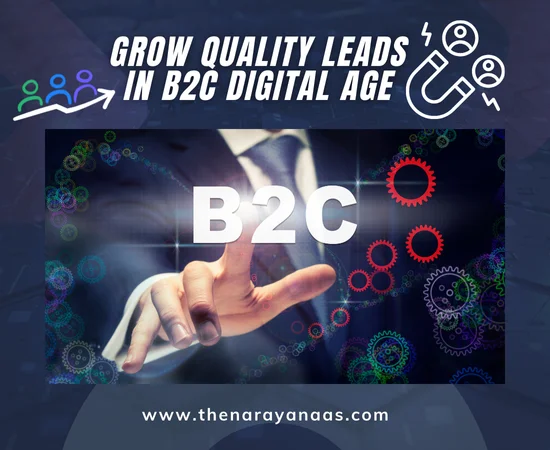Businesses need to become experts at B2C lead generation in the digital age if they want to remain competitive. The foundation of all marketing and sales initiatives, lead creation is essential for increasing income and clientele. But, producing quality leads in the business-to-business (B2C) market has different difficulties than in the B2B sector. The fundamentals of B2C lead generation, tactics for enhancing your efforts, and resources you can use to increase client acquisition and conversion will all be covered in this article.
What is B2C Lead Generation?
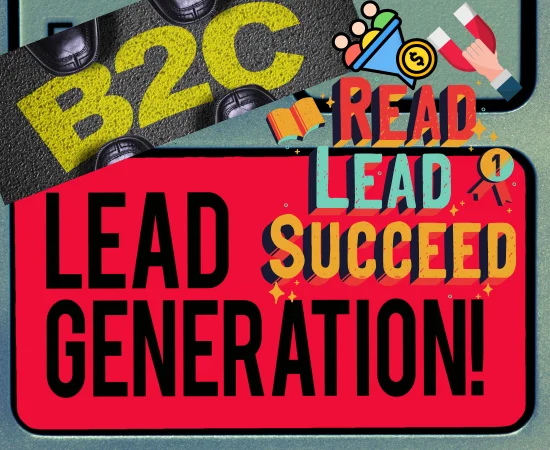
The process of finding and drawing in prospective clients who are probably interested in your goods or services is known as (business-to-consumer) B2C lead generation. The next step is to nurture these leads through sales and marketing funnels in order to eventually turn them into paying clients.
There are numerous of B2C lead generation,: social media, email marketing, paid search, direct mail, event marketing, and even offline strategies like these. B2C lead generation is frequently more hurried and emotionally charged than B2B lead generation, with customers making decisions based on their most pressing needs, wants, and emotions. B2B lead generation, on the other hand, places more emphasis on building connections and lengthy sales cycles.
The Importance of B2C Lead Generation
Lead creation is crucial for B2C businesses because it helps with:
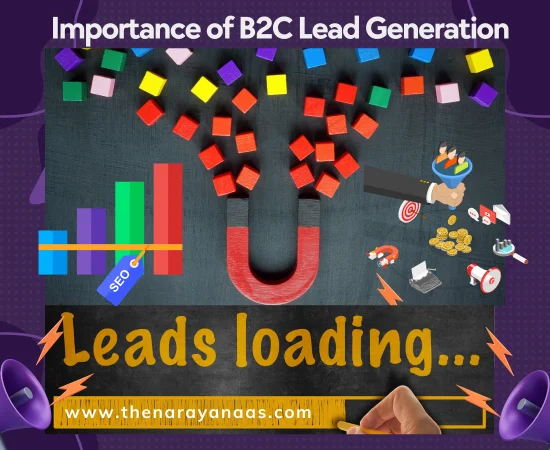
- Developing a Customer Base: Your company cannot expand if there is no steady stream of leads. Bringing in new business and boosting sales both begin with luring in prospective clients.
- Increasing Brand Visibility: B2C lead generation programs make your brand more visible and present online, particularly on digital media. Future sales and natural recommendations may result from this awareness.
- Boosting Sales Growth: If you have efficient marketing and sales funnels to convert those leads, more leads translate into more sales.
- Data Gathering for Improved Targeting: Gathering useful client information is a common step in the B2C lead generation process. Future ads can benefit from this data’s ability to target more precisely and personalize consumer encounters.
Effective B2C Lead Generation Techniques
Businesses who want to be successful in B2C lead generation must use a range of complementary strategies. Some of the best methods for producing excellent leads in the B2C industry are listed below:
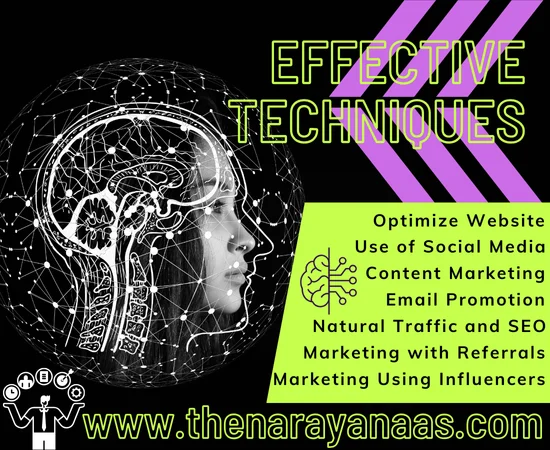
- Make Your Website Lead Capture Optimized
One of the main channels in which prospective customers engage with your brand is through your website. Its lead capture optimization ought to be given first consideration. Here’s how to accomplish it:
- Use Popups and Exit Intent Forms: Employ exit intent forms and popups to nudge visitors to leave their contact information before they leave your website. For example, you may provide a discount code or a free download in exchange for their email.
- Make Lead Capture Forms Simpler: Cut down on the amount of fields your forms need to have. Your lead conversion rates will increase if users can fill out the form more quickly and easily.
- Clearly State the Call to Action (CTA): Make sure your CTA is obvious and compelling. Whether you’re requesting that users download an ebook, subscribe to your newsletter, or make a purchase, make sure the call to action (CTA) is clearly visible on the page.
- Make Use of Social Media
Social media sites that let you interact directly with customers, like Facebook, Instagram, and TikTok, are great for B2C lead generation. Here’s how to utilize them effectively:
- Run Targeted Ads: Facebook Ads and other platforms provide accurate audience targeting by taking into account the interests, activities, and demographics of users. Ads that are especially made for certain audience categories are available.
- Provide Interesting Content: Live broadcasts, tales, and videos can pique viewers’ interest in your company. You’re more likely to generate leads the more users you connect with. Using social media posts to offer unique deals is another strategy to boost interaction.
- Apply Social Proof: Trust is developed through user-generated information, testimonials, and reviews. Display these on your social media pages to demonstrate to prospective customers that your brand is well-liked by others.
- B2C Content Marketing
Even while B2C clients tend to make purchasing decisions more quickly than B2B ones, content marketing can nevertheless be quite important for generating leads. You can draw in more clients by producing interesting, educational, or useful material. Among the applications for content marketing are:
- Blogging: Write blog entries that clarify common issues for customers, respond to commonly requested queries, or offer information or amusement. To attract organic visitors, make sure your blog content are optimized for search engines.
- Video Content: B2C audiences respond well to videos, particularly short-form videos. Make tutorials, client endorsements, or product demos that highlight the benefits of your offerings.
- Interactive Content: Calculators, polls, and quizzes can pique users’ interest and ask for contact information in return for customized answers.
- Email Promotion
One of the best methods for lead nurturing and conversion is still email. Here’s how you can take use of it:
- Provide Incentives for Subscribing: Deal incentives to people who join your email list, such as a coupon code, a free ebook, or a special deal.
- Customize Your Emails: It is best to make your email campaigns as unique as possible. Sort your list based on consumer behavior or demographics, then customize your emails to each recipient.
- Deliver Value-Driven Content on a Regular Basis: Avoid spamming subscribers with unsolicited emails. Send them useful material instead, which will help them feel more connected to your brand. Engaging your audience with unique promotions, product updates, and educational content is possible.
- Natural Traffic and SEO
Although it takes time, SEO (Search Engine Optimization) can yield big results in lead production. By making your content and website search engine friendly, you can draw in organic traffic from people who are looking for similar goods or services.
- Target Long-Tail Keywords: Long-tail keywords, or more specialized phrases, are frequently easier to target and can deliver highly relevant traffic, but highly competitive keywords might be difficult to rank for.
- Optimize for Speed and Mobile: Make sure your website loads quickly and is compatible with mobile devices as a large percentage of web traffic originates from these devices. When ranking pages, Google also takes site speed into account.
- Employ Local SEO: Be careful to optimize for local search if you have a physical location. To improve your position, claim your Google My Business profile, make use of local keywords, and promote customer reviews.
- Marketing with Referrals
Using referral marketing, you can generate new leads by utilizing your current customer base. Referrals are a very powerful lead generating tactic since people are more likely to believe recommendations from friends and family.
- Put in Place a Referral Initiative: Offer incentives, such as discounts or freebies, for customers who refer their friends and family to your business.
- Promote Testimonials and Reviews: Having positive ratings on sites like Yelp, Google, or even social media can increase lead generation.
- Marketing Using Influencers
Influencer marketing is a great way to reach new audiences, particularly if you’re trying to reach millennial and Gen Z consumers. In order to use influencer marketing:
- Collaborate with Perceptive Influencers: Assist influencers whose followership corresponds with your intended audience. Seek for micro-influencers: Unlike celebrity influencers, who typically have lower engagement rates, micro-influencers have smaller but highly active followers.
- Create Authentic Campaigns: Genuine campaigns are the most effective ones for influencers. Give influencers the artistic license to showcase your good or service in a way that appeals to their audience.
Resources for Creating B2C Leads
To assist you plan your lead generating activities, make use of the following resources:
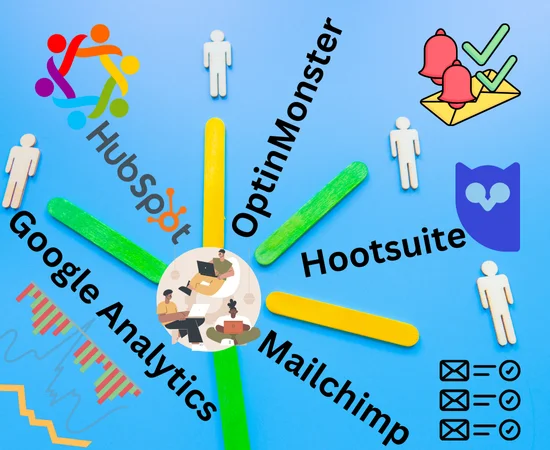
- HubSpot: A CRM with social media integration, email marketing, and form generating capabilities.
- Opt-in Monster: A tool for making slide-ins, pop-ups, and other lead collection forms is called Opt-in Monster.
- Hootsuite: A platform for social media management that will assist you in organizing, carrying out, and keeping an eye on your campaigns.
- Google Analytics: You can improve your lead generation tactics by using this tool to track website traffic and conversions.
- Mailchimp: A platform for email marketing called Mailchimp provides tools for building drip campaigns and segmented lists.
Assessing Achievement
You should monitor the following key performance indicators (KPIs) to ascertain the effectiveness of your B2C lead generating campaigns:
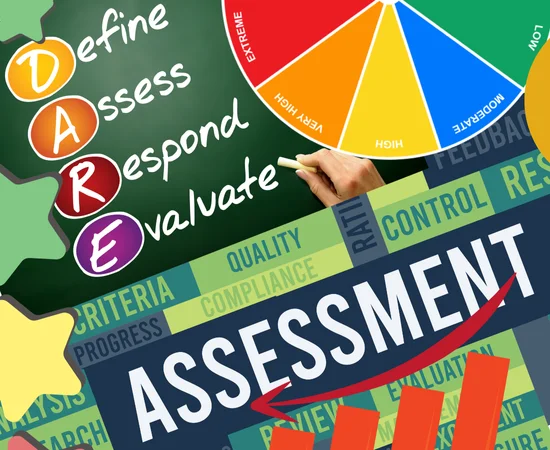
- Conversion Rate: The proportion of leads that result in actual payments from clients.
- Cost per Lead (CPL): Determined by dividing your entire marketing spend by the quantity of leads generated, CPL is the average cost of getting each lead.
- Lead Quality: Lead quality is a subjective term that describes the probability that a lead will become a customer.
- Return on Investment (ROI): Return on Investment (ROI) is the total amount of money you make from lead generating efforts relative to their expenditures.
In summary
A variety of tactics are needed for B2C lead generation, which is a dynamic process that involves capturing, nurturing, and converting leads. You may continuously generate high-quality leads by optimizing your website, implementing email marketing, social media, and content production. But the secret to long-term success is to test and iterate your strategy using performance indicators. By converting prospects into devoted clients, your company can develop significantly with the correct plans and resources in place.
What is the difference between B2B and B2C lead generation?
The methodology and target audience are where the biggest differences exist. B2B lead generation is the process of obtaining leads from other companies; it frequently entails drawn-out sales cycles, difficult choices, and relationship-building. ,B2C lead generation, on the other hand, focuses on individual customers and typically involves speedier decision-making based on individualized tastes, feelings, and more pressing needs. To quickly attract and convert prospects, B2C campaigns typically rely primarily on digital marketing platforms like social media, SEO, and email marketing.
What are the best channels for B2C lead generation?
Social media sites like Facebook, Instagram, and TikTok, which enable customized advertising and consumer interaction, are among the best sources of B2C leads.
Personalized emails may nurture and convert leads in email marketing.
SEO is the process of increasing organic traffic from search engines.
Influencer marketing is the process of introducing your items to new audiences through collaborations with influencers.
How do I measure the success of my B2C lead generation efforts?
Various crucial measures can be employed to assess the effectiveness of B2C lead generation, including:
The percentage of leads that become paying clients is known as the conversion rate.
The amount spent on acquiring each lead, determined by dividing the total marketing spend by the quantity of leads produced, is known as the cost per lead (CPL).
Lead Quality: Based on engagement or actions made after being collected, this statistic assesses a lead’s likelihood of converting.
Return on Investment (ROI) is the total amount of money made from lead generating activities relative to their expenditures.

